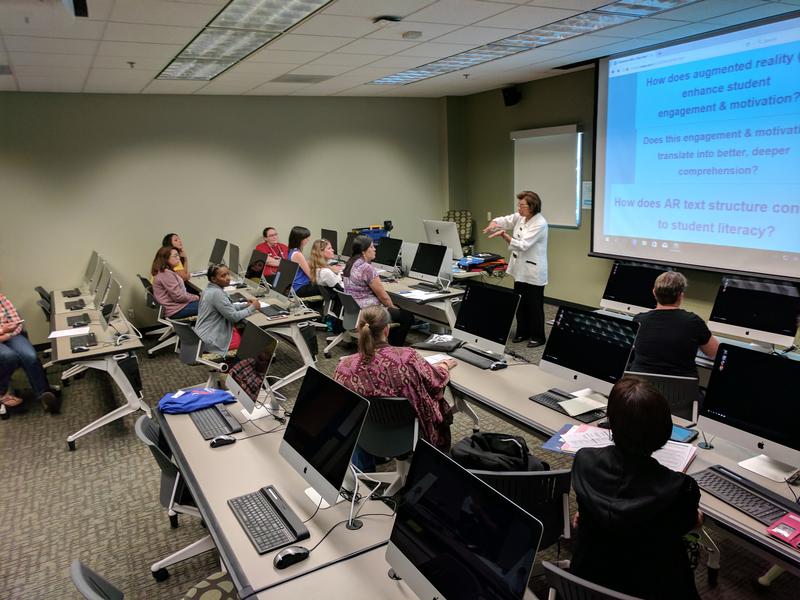From Texas Public Radio:
Alice Asevedo works for Edgewood Independent School District. Laura Johansen home schools an elementary-aged child.
Both women are blown away by this training on Augmented-Reality books. AR books use smartphones or tablets to add a layer of content on traditional books.
Over their audible gasps, laughs and exclamations, there is a palpable excitement over how they can use these books.
“It’s the Earth,” says Johansen, “It’s the whole Earth,” she says staring at a three-dimensional model through an ipad.
“Oh my God,” says Asevedo laughing.
“You can see the whole planet and you can rotate it and see where all the continents are,” Johansen says in awe. She stops over an icon of a hurricane, hovering over the Gulf of Mexico. She clicks and more information about Hurricane Katrina pops up, eliciting another gasp.
The two are part of a 15-person training at a recent conference hosted at the University of Texas San Antonio. They are looking at a variety of children’s books, both nonfiction and fiction, and using provided tablets and pre-loaded apps to make them come to life.
Early childhood books are at the forefront of the AR publishing movement says Texas A&M Kingsville Assistant Professor Marybeth Green.
“Everybody says wow, and they’re so enthralled by what they see that they get really excited about it,” she says.
Despite that excitement, Green says teachers need to have a defined plan before bringing AR books into the classroom. There is a lot of concern about the new technology becoming a distraction.
Green ran a small study with 20 student-teachers at rural schools around Kingsville.
She says she did get feedback about AR books being a distraction, but several said AR added to comprehension. One student-teacher relayed that after multiple attempts of describing it, her students just couldn’t grasp the concept of the dark side of the moon. But one look at the augmented-reality book with a three-dimensional model, and the kids instantly got it.


















